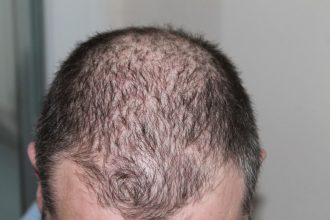In the realm of nanomedicine, lipid nanoparticles have emerged as indispensable tools with far-reaching implications, particularly in the context of mRNA-based vaccines. As the world grapples with the ongoing COVID-19 pandemic, the spotlight has turned to the transformative potential of lipid nanoparticles in enabling the rapid development and deployment of mRNA vaccines. Let’s explore the lasting impact of lipid nanoparticles mRNA, from their inception to their pivotal role in shaping the landscape of modern medicine.
The Rise of Lipid Nanoparticles:
Lipid nanoparticles represent a sophisticated delivery system for therapeutic molecules, offering a myriad of advantages such as biocompatibility, stability, and the ability to encapsulate a diverse range of payloads. In the context of mRNA vaccines, lipid nanoparticles serve as protective carriers, safeguarding fragile mRNA molecules from degradation and facilitating their delivery into target cells.
Overcoming Challenges in Nanomedicine:
The field of nanomedicine is not without its challenges, ranging from immunogenicity and toxicity concerns to the need for precise control over nanoparticle properties. Challenges in nanomedicine can hinder the development and effectiveness of therapeutic approaches. Lipid nanoparticles have emerged as a promising solution to many of these challenges, offering a versatile platform for the targeted delivery of therapeutic agents while mitigating adverse effects on healthy tissues. By addressing concerns related to immunogenicity, toxicity, and nanoparticle properties, lipid nanoparticles offer a promising avenue for overcoming obstacles in nanomedicine and advancing innovative therapies.
Lipid Nanoparticles in mRNA Vaccines:
The emergence of lipid nanoparticles as a cornerstone of mRNA vaccine technology represents a paradigm shift in vaccine development. Traditional vaccine approaches often rely on weakened or inactivated pathogens to induce an immune response. In contrast, mRNA vaccines leverage the body’s own cellular machinery to produce viral proteins, eliciting a robust immune response without the need for live viruses.
Lipid nanoparticles play a crucial role in mRNA vaccine formulations by encapsulating and protecting mRNA molecules, facilitating their uptake by host cells, and promoting efficient translation of viral proteins. This innovative approach not only enables rapid vaccine development but also offers unparalleled flexibility in targeting emerging infectious diseases.
The COVID-19 Pandemic and Beyond:
The global response to the COVID-19 pandemic has underscored the pivotal role of lipid nanoparticles in vaccine development and deployment. The mRNA vaccines developed by Pfizer-BioNTech and Moderna, both relying on lipid nanoparticle technology, have demonstrated remarkable efficacy in clinical trials and real-world settings, providing hope for controlling the spread of the virus.
Beyond COVID-19, the impact of lipid nanoparticles extends to a wide range of therapeutic applications, including cancer immunotherapy, gene editing, and regenerative medicine. As researchers continue to unravel the complexities of nanoparticle biology and refine their design principles, the potential applications of lipid nanoparticles in medicine are poised to expand exponentially.
Conclusion:
In conclusion, the enduring influence of lipid nanoparticles in mRNA vaccines exemplifies the transformative power of nanomedicine in addressing global health challenges. From their inception as versatile delivery vehicles to their pivotal role in combating the COVID-19 pandemic, lipid nanoparticles have reshaped the landscape of modern medicine.
As we navigate the complexities of the 21st century healthcare landscape, the legacy of lipid nanoparticles serves as a beacon of innovation and hope. By harnessing the unique properties of nanoparticles, researchers and clinicians alike are poised to usher in a new era of precision medicine, where targeted therapies and personalized interventions hold the promise of improving patient outcomes and advancing human health.















